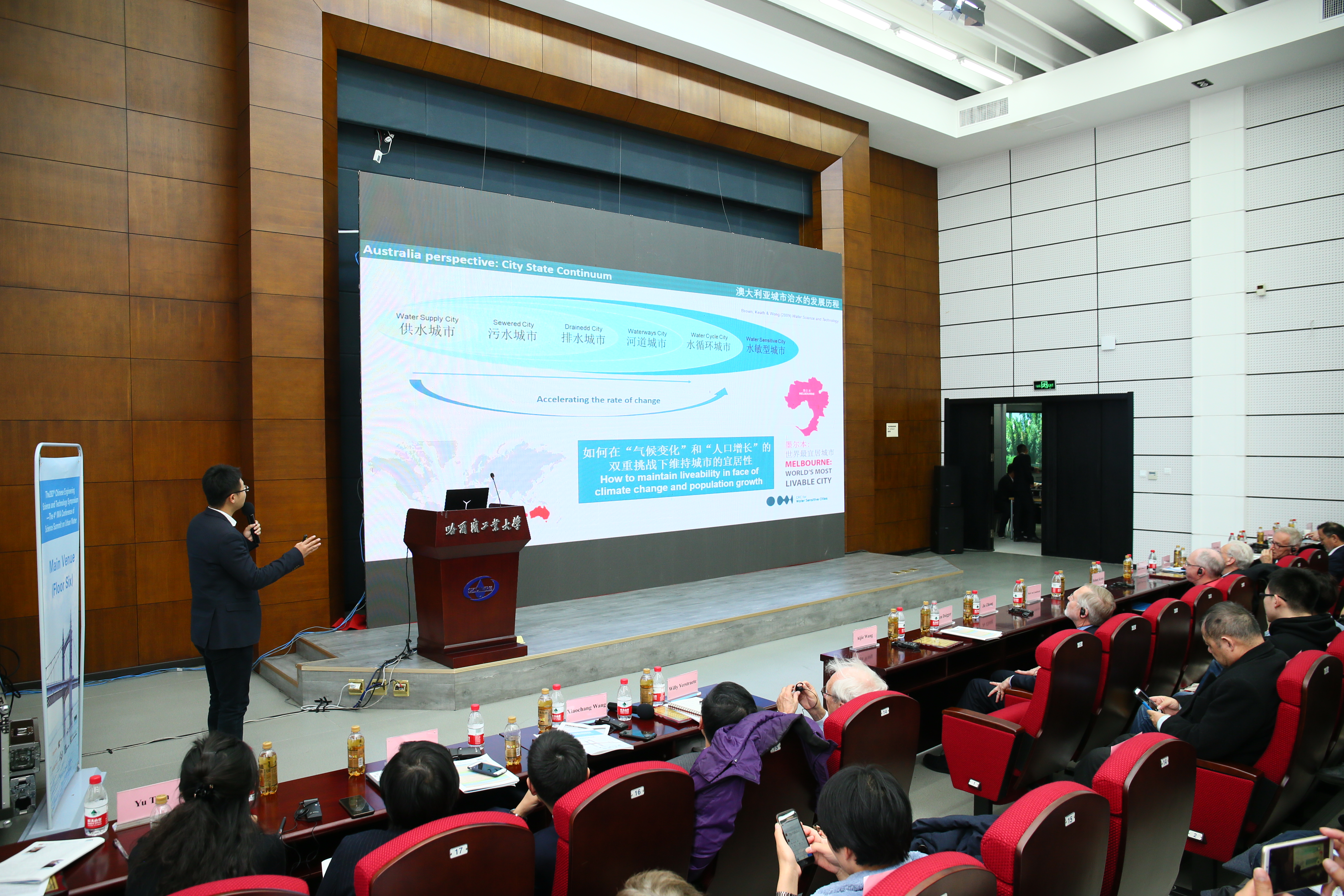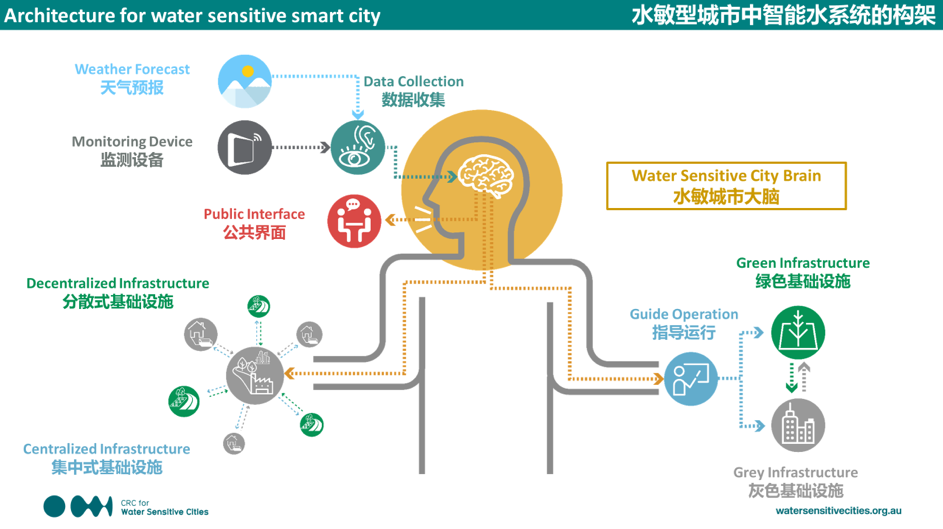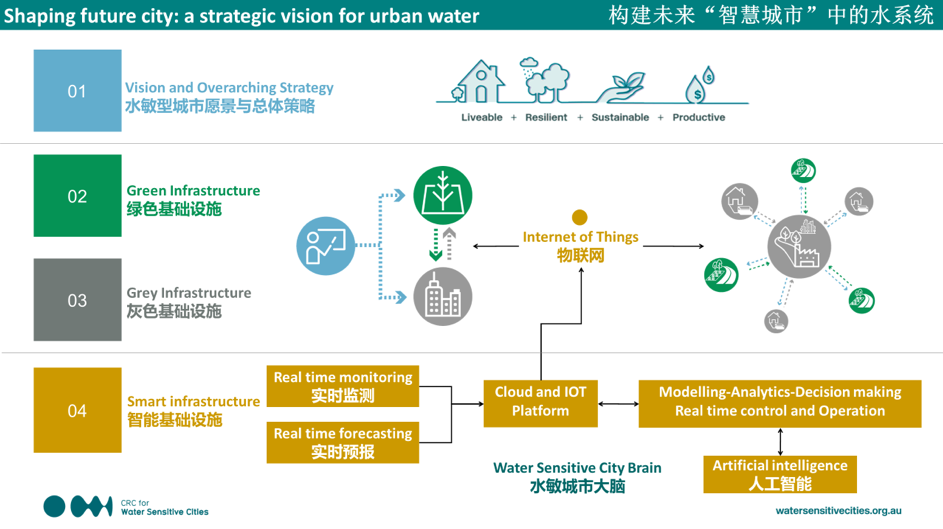The world is watching Australia’s water sensitive cities

Our International Engagement Manager (Asia) Jianbin Wang brought the world’s attention to Australia’s water sensitive cities as a leading example for other countries during his plenary keynote address at the 4th International Water Association Science Summit on Urban Water, held in China from 26–27 November.
Jianbin presented the CRCWSC’s vision for future water smart cities, which use green and grey hybrid infrastructures at both centralised and decentralised scales and are enabled by emerging technologies such as real-time monitoring and internet of things.
Together with the architecture for a water sensitive smart city (see below), Jianbin shared a range of on-ground implementation examples in China, as proof-of-concept for our water smart city vision, for example:
- The Kunshan Jiangnan Estate uses ecological landscape as a multi-functional open space, forming a precinct scale stormwater harvesting and reuse system.
- The 40km Kunshan ring road is a grey-blue-green multi-functional corridor, for transport, flood conveyance and water quality management, as well as an ecological and landscape corridor.
The Chinese Ministry of Housing and Urban Rural Development selected both projects as national sponge city case studies.
Around 250 delegates from 10 countries were able to better understand how Australia is pursuing a water sensitive future and what might be possible elsewhere in the world.
The two-day conference was co-hosted by the IWA, the Chinese Academy of Engineering, and the Harbin Institute of Technology, and themed ‘Future urban water system: smart and healthy’. Sessions addressed the challenges and future development trends for urban water systems, and delegates brainstormed solutions in response to urban water issues such as population growth and climate change.
Other plenary keynote speakers joined Jianbin Wang at the conference, including two IWA past presidents, Professor Glen Daigger and Professor Helmut Kroiss, and the recent Stockholm Water Prize winner, Professor Mark van Loosdrecht.
The University of New South Wales was also represented by Professor David Waite at the event.

